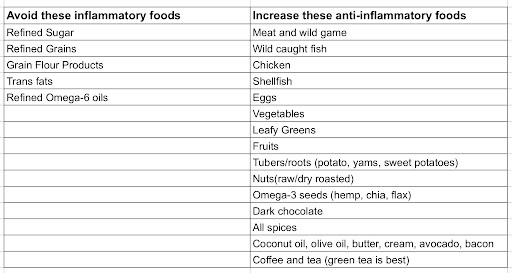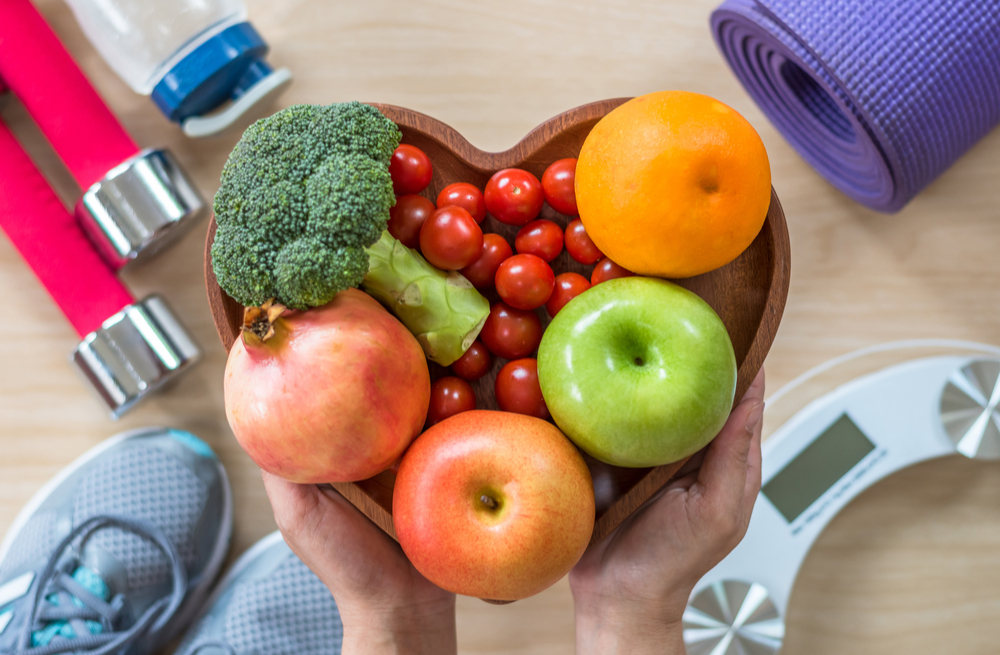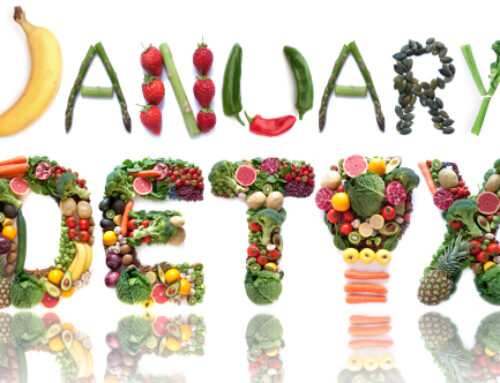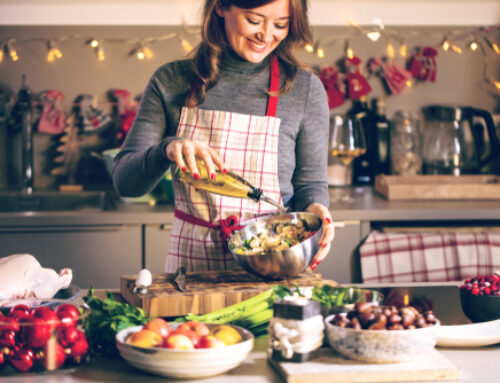In our previous newsletter, the signs of systemic inflammation were discussed. Weight gain, blood sugar instability, joint and tendon degeneration, and many other common disease states take their origin from inflammation. Inflammation can be measured by blood tests, metabolic panels, and waist circumference. It was also highlighted that inflammation frequently stems from chronic states of stress, poor sleep, and dietary intake. In this post, we hope to expand upon what steps you can take to reduce your body’s inflammation.
It starts with nutrition
Nutrition is the foundation of change for any systemic inflammatory process. How your body digests, processes, and eliminates the food you ingest greatly impacts the inflammatory compounds it releases. We would all recognize that someone who consistently chooses cigarettes, Krispy Kreme, and copious amounts of alcohol over fruits and vegetables will become a health disaster down the road. The process of that person’s eventual demise is a rise in inflammation that disrupts the body’s ability to recover and heal, fend off cancer and infection, and to age at a normal rate. Look at an older rock and roll star, for an example, of how years of lifestyle choices have an effect on inward health and outward appearance.
Here is a short list of foods that raise inflammation and foods that lower inflammation that become a great starting spot when looking to improve nutritional choices.

The goal of eating to reduce inflammation in the body is to not focus on just which foods inflame the body but to focus on foods that ‘deflame’ the body. This ‘deflamation’ process is bringing the body one step closer to personal goals and to a body’s optimal health.
Start with the end in mind
To start the move towards a healthy lifestyle, begin with the end. Food is not about temporary, carnal and emotional satisfaction. Food is about fueling the body to carry a person to their goals. Begin by writing down goals of what a healthy body would/could do. These are outcomes, not results. Skip the “I want to lose 30 pounds.” Instead, state “I want to be able to play with my grandchildren.” That may be the result of losing 30 pounds, but the goal is to be able to play with grandchildren.
Action Step: Write down 3-6 outcome based goals and focus on these as you choose your next meal.
Normalizing inflammatory markers
The next step of healing the body begins with normalizing the signs of inflammation. In Part 1 of this series, the bodily signs of inflammation were listed. This included BMI, inflammatory blood chemistries, metabolic markers, waist to hip ratio, and more. The first goals of making a lifestyle change should include normalizing these markers. Do not make choices based upon food. Rather, make the choices about eliminating the signs of inflammation. This helps make daily dietary choices less emotional for our brains and reduces the stress that often accompanies a major lifestyle change. If you are looking to have a ‘cheat meal,’ only do so in a way that allows you to keep your markers in a normal range. This will keep you on track and you can rest assured your goals are within reach.
Action Step: Measure and track the progress of your inflammatory markers.
It gets easier
One point that I want to make is that as time goes on, the process of getting healthier and staying healthier gets easier. One example of this is how body fat elimination reduces inflammation and pain. Food is not the only source of inflammation, so is body fat. Adipocytes (fat cells) are found within every human body. But, in those that are overweight, adipocytes take on an aggressive pro-inflammatory state by housing immune cells that release inflammatory cytokine chemicals. This creates a low level inflammatory state similar to a cold or flu. Fatigue, brain fog, and aches and pains will often result from this without the presence of an offending virus or bacteria.
The answer is to stop filling up our bodies with pro-inflammatory foods. This will lead to a rapid reduction of the chemicals that produce pain and inflammation. Likewise, the new food choices will begin to reduce the body fat accumulation in the adipocytes. This two-fold reduction of disease causing, pain producing, and fatigue creating chemicals can quickly give a boost to your health. When you start to see results and begin having more energy and less pain, it becomes even easier to choose health over disease.
Action Step: Keep a weekly journal of how your body is changing and the pain that you are feeling.
Meals, snacks and supplements
I want to keep things as simple as possible. Here are some ideas for meals, snacks and supplements to help keep you in a reduced inflammatory state. This list is obviously not fully inclusive but is meant to give you ideas to begin your lifestyle changes.
Breakfast: 2 fried eggs, 1 piece of bacon, small protein shake with blueberries, kale, ½ lime, ginger, protein powder, and water or ice.
Lunch: Grilled chicken or fish, spring mix lettuce, and berries.
Dinner: Sautéed meat with vegetables (a lot) squash, zucchini, broccoli, brussel sprouts, etc. Add plenty of spices and use olive, avocado or coconut oils to sauté in.
Snacks: Almonds, cashews, berries, low sugar protein bar.
Drinks: Water, coffee, green tea, herbal teas
Supplements that help promote a reduced inflammatory state:
- 1000-3000mg of Fish oil
- 500-1000mg of Magnesium
- 5000iu of Vitamin D
- 5g of L-glutamine
- Multivitamin
- Turmeric
- CBD
The Rescue Plan:
On occasion, life will happen and you will find yourself in an inflammatory state. This may happen after a vacation, weekend wedding, or even after an inflaming athletic event like a marathon or triathlon. These temporary events can have an immediate effect on our body resulting in soreness, pain, swelling, fatigue and more. Try this rescue plan for a quick turnaround.
- 1 cup of green tea
- 5g of L-glutamine
- 1000mg of Magnesium
- Detox Smoothie: 1 cup of dandelion greens, 2 tablespoons of fresh ginger, 1 cup of kale leaves, 1⁄2 cup coconut milk, 1⁄2 scoop chia seeds, 3 oz. of pomegranate juice, 1 tablespoon of lemon flavored fish oil, 1 scoop of vanilla protein, 1 cup of ice, blend and serve.
For more practical information on how to reduce systemic inflammation and to improve your overall health, check out our website for other articles on nutrition.
We also invite you to join us for our “Fight Inflammation” class September 15 at 6:30pm. Space is limited! Sign up in the office today!

Daryl C. Rich, D.C., C.S.C.S.






